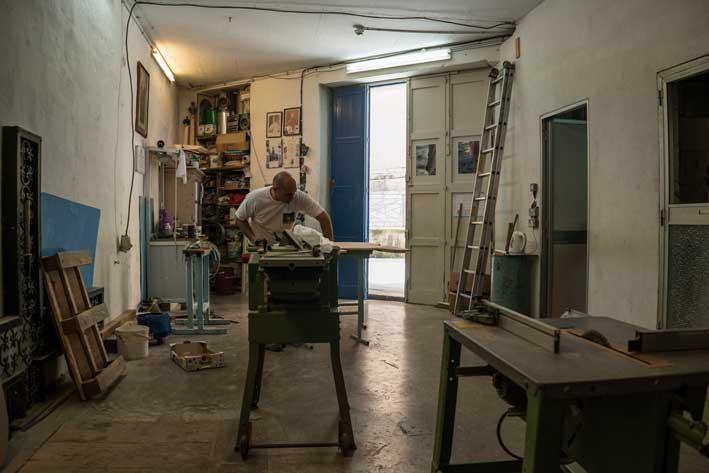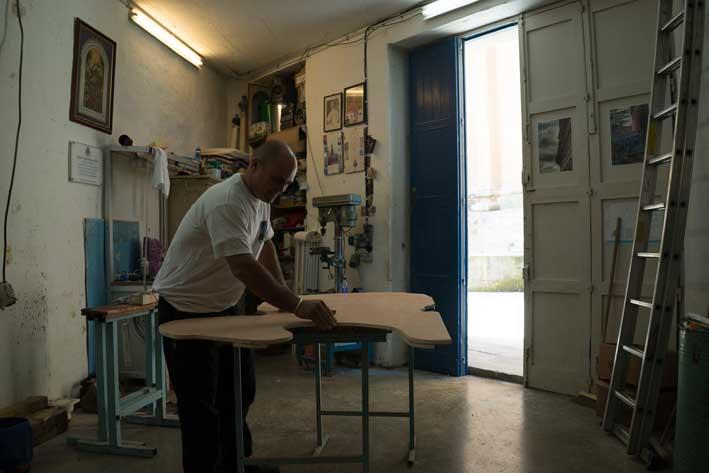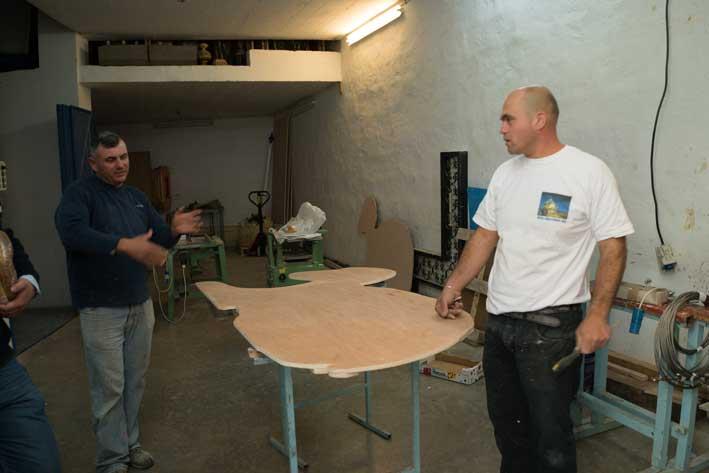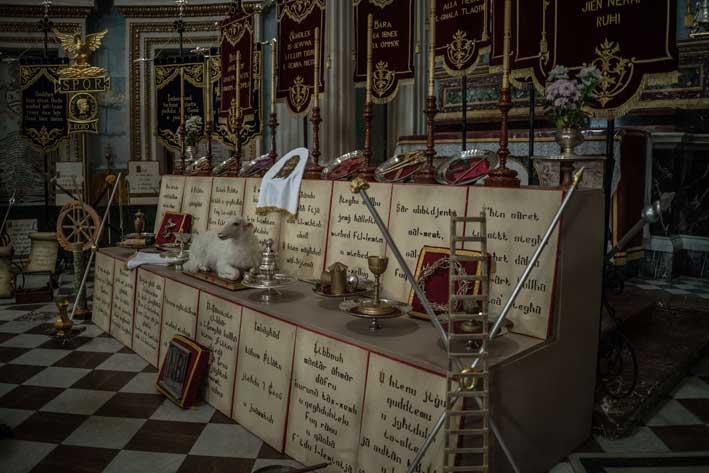Hidden in an alleyway cast in shadow by the immense structure that is the Mosta Church are three middle-aged men, passionate about their hometown. These men form part of the Grupp Armar Marija Assunta and are responsible for the preparations of religious events in Mosta. One of the men wears a distinct t-shirt with a picture of the Mosta dome on it.
The group dates back to 1996, and is dedicated to keeping the Assumption of Mary feast as vibrant as ever. This newsroom spoke with the group about Holy Week and the devotion behind their work.
The preparations for Holy Week in Mosta begin during Lent, with restoration and maintenance of the Statues beginning early in October. While the group’s main focus is the local feast, Holy Week requires a halt in their preparations. It is estimated that approximately 400 people are involved each year in the organisation and execution of holy week.

Photos Luke Zerafa
The statues are brought out of storage three weeks prior to Good Friday. Each statue requires approximately 6 to 8 bearers, and being chosen to carry one of the nine statues is considered to be a great honour. The people chosen prepare each statue weeks before Good Friday by embellishing it with flowers and leaves depending on the scene depicted.

Seven of the nine Good Friday statues were made by Carlo Darmanin who is known as the Prince of Maltese statuaries. The statues made by him are Christ in the garden of Gethsemane, Christ bound to the column, Christ crowned with thorns, Christ the Redeemer, Veronica (wiping the face of Jesus), the statue of the Crucifixion and the statue of Our Lady of Sorrows.

Tradition is the foundation of Holy Week in Malta. A particular tradition is that of wearing chains around one’s feet during the Good Friday procession. This is considered as an act of penance and many do it to prove their devotion, some are even dared to take part. The chains are offered to the participants and weigh approximately 4kg.

The procession leaves the Mosta church and proceeds onto an extensive route along old parts of the locality. A large group of people walk with the procession while others sit outside their door, waiting for it to come to them. While the number of children has decreased, some adolescence still gather at 7am on Saturday to help clear up, each eager for a chance to carry the statues back into storage.

The men from the Grupp Armar Marija Assunta explained how their dedication to the Feast and Holy Week combines together their devotion, pastime and love for Mosta. Their goal - to take care of what their ancestors built and to keep tradition alive.







